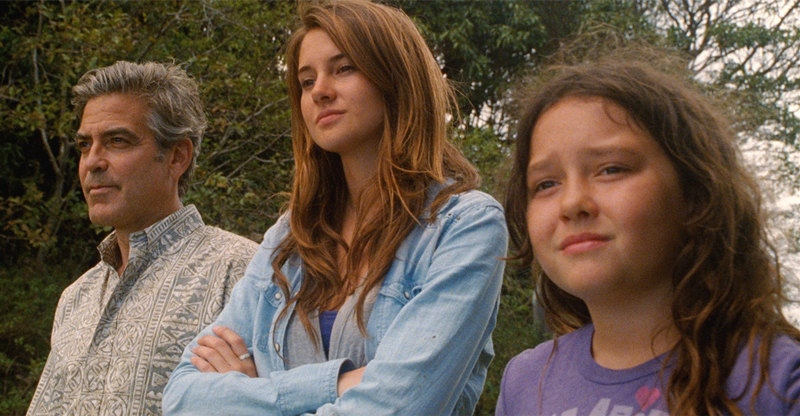The premise is certainly intriguing enough. Based on the book by Beverly Lewis, “Saving Sarah Cain” concerns a self-absorbed yuppie whose life abruptly changes when she travels to Lancaster County, Pennsylvania to attend her sister’s funeral . . . and discovers that she’s been named guardian of five Amish nieces and nephews. There’s all sorts of potential for culture clash here, and, we would hope, a chance to learn about Amish ways.
But “Saving Sarah Cain” distills the whole complex situation into a made-for-TV formula (though it was apparently a big-screen limited release overshadowed by “Superbad”), with shortcuts aplenty.
Let’s start with the whole Amish culture. Instead of feeling as if we’ve just spent a week in Amish country, or at least a day, the amount of information and insight we get amounts to a drive-by. We simply don’t see enough of the community engaged in everyday activities to develop a real appreciation for the culture or the clash. The plain black dresses and pants, the men’s beards and straw hats, and the female prayer bonnets are the main things used to suggest cultural differences, but when the children deviate from the Plain People who raised them, we don’t know enough to appreciate how severe are their transgressions.
The script from Michael Landon, Jr. and Brian Bird (“Touched by an Angel”) takes another shortcut and goes straight for the heart. Though the heavy-handed script and direction stops short of melodrama, there’s enough string music and weepy-eyed two-shots or lingering reaction shots to suggest that they’re at least flirting with melodrama. You know the look that people get when they’re trying not to cry? Well, that’s the way this whole film feels–not quite weepy, but plenty sappy.
People who’ve read the book will also notice a few changes. Rather than Sarah (played here by Lisa Pepper) being a successful-but-harried yuppie realtor, she’s a columnist who, we’re told, hasn’t written anything decent for several years now. Uh, so why is her editor-boss Bill (Elliott Gould) still smiling as he points this out, instead of canning her keester? In the book, Sarah had stronger opinions on the Amish culture, thinking that what her sister and husband were doing by raising their children that way was a form of deprivation, and therefore cruelty. We just don’t get a real sense of culture-clash when Sarah’s response in the film is the same outsider-looking-in strangeness that non-Amish viewers feel when looking at the culture. And it hurts that Sarah doesn’t spend as much time in Amish country in the movie version. This is no more apparent than when we see Academy Award nominee Tess Harper wasted in a role as one of the Amish women who only briefly clashes with Sarah, and in the mildest sort of way.
Sarah takes the kids back to Portland to her spacious downtown loft condo and enrolls them in school. Pepper is pleasing on the eyes, but her range of emotion seems too limited for this role. She’s too stunned-looking and yet unmoved, whether the children awaken her at 5a.m. with their singing or one of them runs away. Even the scenes with the most interest-clashes at school between the Amish children and “normal” children-aren’t developed as much as you’d wish. Everything is reduced to two clashes: Anna Mae (Danielle Chuchran) secretly changing into some of Sarah’s clothes so she looks “hot” in jeans, and Caleb (Soren Fulton) getting bamboozled into shedding his conservative garments and anti-violence views to wrestle for the high school team.
Though all the children turn in fine performances, including the youngest, Bailee Madison (“Bridge to Terabithia”) as Hannah and Tanner Maguire as Josiah, it’s Abigail Mason who steals the show with her performance as the 16 year old niece, Lyddie, who begged Sarah to take them in until she turns 18 and can care for the family herself. Mason’s previous credits included one-time guest shots on shows like “The Suite Life of Zack and Cody,” but she shows great depth and range here, and ought to be leaving the small screen behind her.
Ultimately, though, even her efforts aren’t enough to save Sarah or this film from a predictable and sappy fate. That said, my daughter still enjoyed this film, and I have to say that it’s innocuous enough family entertainment (rated PG for “brief teen smoking”). Given the intriguing premise, it’s just disappointing.
Video:
“Saving Sarah Cain” is presented in 1.78:1 widescreen, which fills out the 16×9 monitor. Scenes of Amish Country (parts were really shot in Lancaster, Pa.) and exteriors of Portland (Utah, actually) look really splendid, but on low-light shots and soft-focus shots you can really see grain.
Audio:
The audio is a nice, clear-and-robust Dolby Digital 5.1 Surround, with subtitles in English, French, and Spanish. Most of it is dialogue or that constant heart-tugging background music, so the rear-effects speakers don’t get much of a workout. The lone, noticeable exception is when the boys “borrow” Sarah’s car and tear up a field with it.
Extras:
The director and co-writer appear in on-screen interviews to talk about the film, and we see some behind-the-scenes shots, but as bonus features go it’s pretty scant. The only other bonus feature is a deleted scenes option that pulls up a handful of extra ones to view. Not much here.
Bottom Line:
If you can live with borderline melodrama and a film that doesn’t rise to its potential, “Saving Sarah Cain” is still wholesome family fare that takes a page from “Touched by an Angel.” Call it “Touched by an Amish.”


